This post may contain affiliate links. Please read our disclosure policy. As an Amazon Associate, I earn from qualifying purchases.
Carbonara is one of those pastas that proves you don’t need a long ingredient list to get incredible flavor. Just guanciale, eggs, Pecorino Romano, and pasta, no cream, no extras. The result? Bucatini coated in a glossy, silky sauce with salty bites of crisp pork and plenty of black pepper. It’s simple, satisfying, and about as close to Roman tradition as you can get at home.
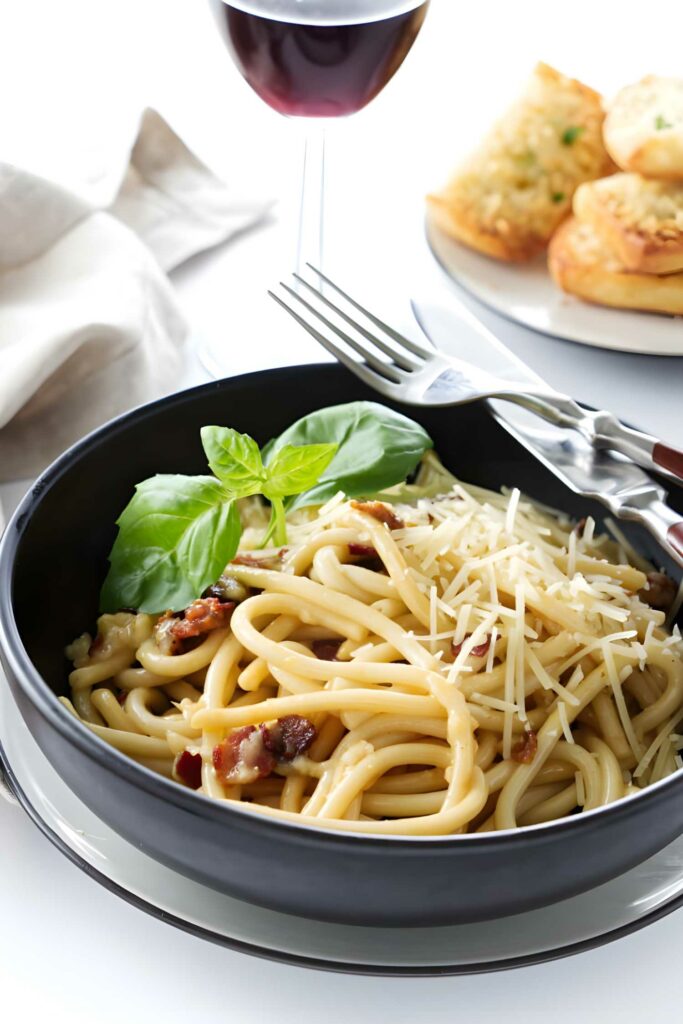
For another Italian classic, try my Bolognese sauce. A rich, slow-simmered favorite that’s as comforting as carbonara.
Here’s Why This Bucatini alla Carbonara Recipe Works
No cream: The sauce comes straight from egg yolks, cheese, and pasta water. Creamy the way it should be.
Guanciale is traditional: Its rich, salty depth makes the dish shine, but pancetta, or even good-quality bacon, works in a pinch.
Glossy, not gloopy: Tossing hot pasta with the sauce in a warmed bowl gives you silk, not scrambled eggs.
Pepper power: A generous grind of black pepper balances the richness and keeps it lively.
Four ingredients, big payoff: Proof that simple doesn’t mean boring.
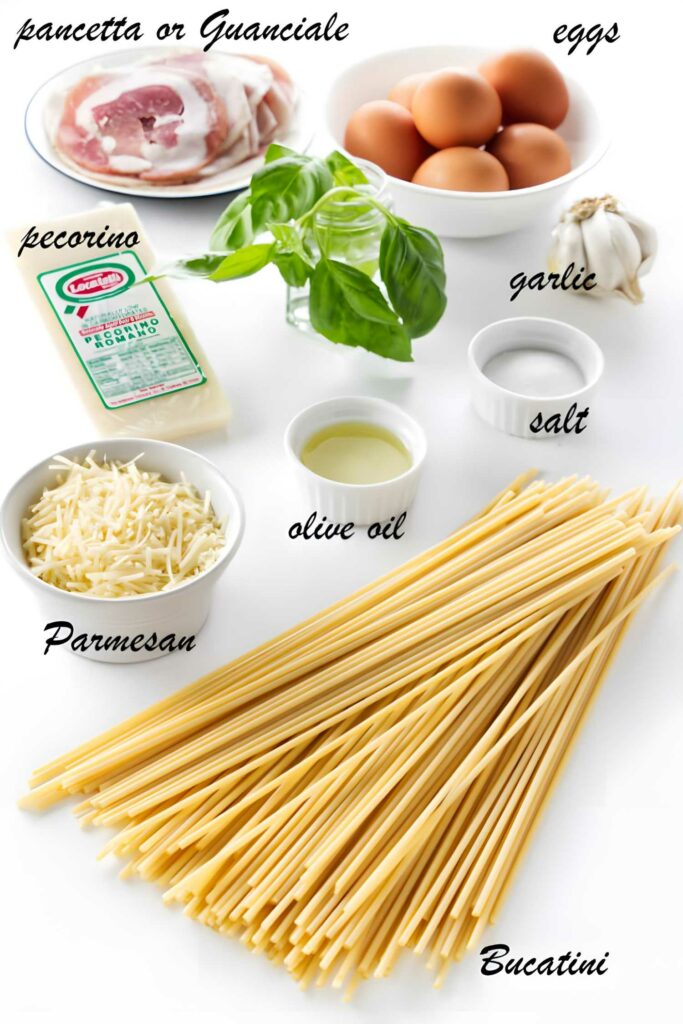
Carbonara Ingredients
Classic Roman carbonara is made with just a handful of ingredients: guanciale, Pecorino Romano cheese, eggs, black pepper, and pasta (usually spaghetti or bucatini).
That’s it. No cream, no garlic, and no extras in the traditional recipe. Our recipe stays true to those roots while offering easy swaps like pancetta or bacon if guanciale is hard to find. The beauty of carbonara ingredients is their simplicity. We do add a touch of garlic, but you can omit it, if desired.

For another pasta night idea, my pasta with black truffle sauce brings rich, earthy flavor that feels special without being fussy.
Recipe Tips
Gentle with the garlic: Keep it soft and fragrant; browned garlic turns bitter fast.
Save pasta water: A spoonful or two loosens the sauce so it coats every strand.
Grate your own cheese: Pre-grated won’t melt smoothly. Fresh Pecorino is key.
Extra yolk: Stir in an additional yolk for a richer, silkier finish.
Temper the eggs: Whisk in a little hot pasta water before adding them to the pasta. This helps prevent scrambling.
Toss off the heat: Combine the pasta, guanciale, and egg mixture in a warm bowl or off the burner so the sauce stays silky, not scrambled.
Pasta shape: Bucatini or spaghetti work best; their surface helps the sauce cling.
Freshly cracked pepper: Grind it coarse just before serving for the most aroma and bite.
Serve immediately: Carbonara doesn’t wait. Plate it hot for the glossiest texture and sere it with a Caprese salad and crusty bread.
For another earthy, umami-rich pasta recipe, my wild mushroom pasta layers deep mushroom flavor into a comforting, hearty dish.
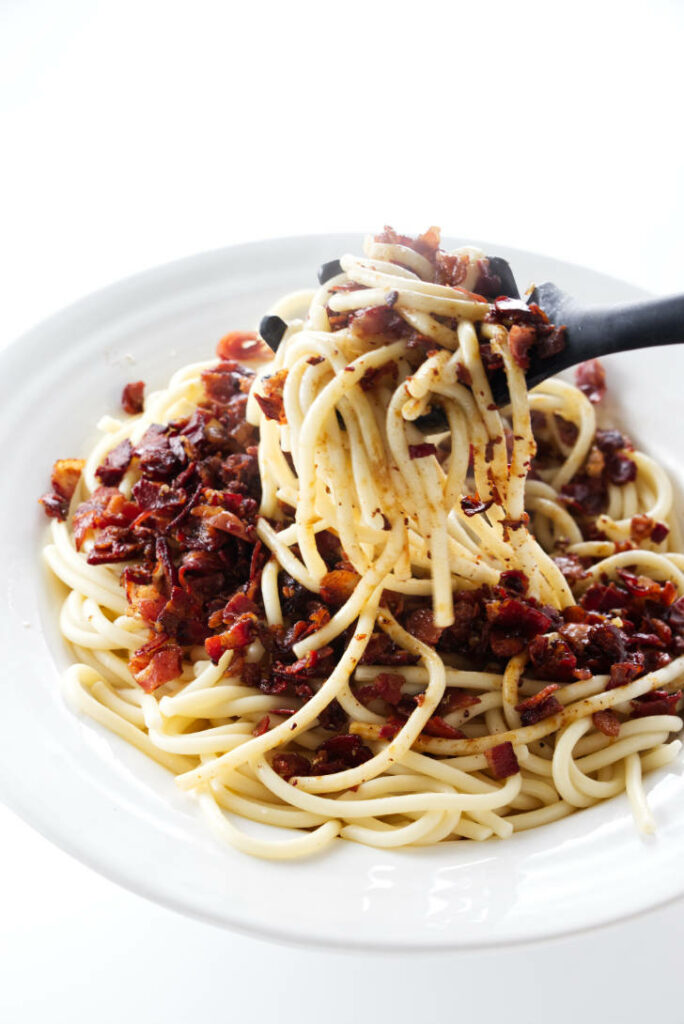
Carbonara Questions Answered
The creaminess in carbonara comes from egg yolks and cheese whisked with hot pasta water. Adding cream is a shortcut that makes it heavy and changes the flavor. When made properly, you don’t need cream at all. The sauce is silky and rich on its own.
Bucatini is classic because the hollow center holds sauce so well, but spaghetti, rigatoni, or even fettuccine are good alternatives. Use a sturdy pasta shape that won’t get lost in the sauce.
Work quickly and toss the pasta off the heat in a warmed bowl. Adding a splash of reserved pasta water helps temper the eggs and create a smooth, creamy sauce instead of clumps.
Yes. The heat from the pasta and reserved cooking water gently cooks the eggs, turning them into a creamy sauce rather than leaving them raw. If you’re still concerned, you can use pasteurized eggs which are safe to eat even if lightly cooked.
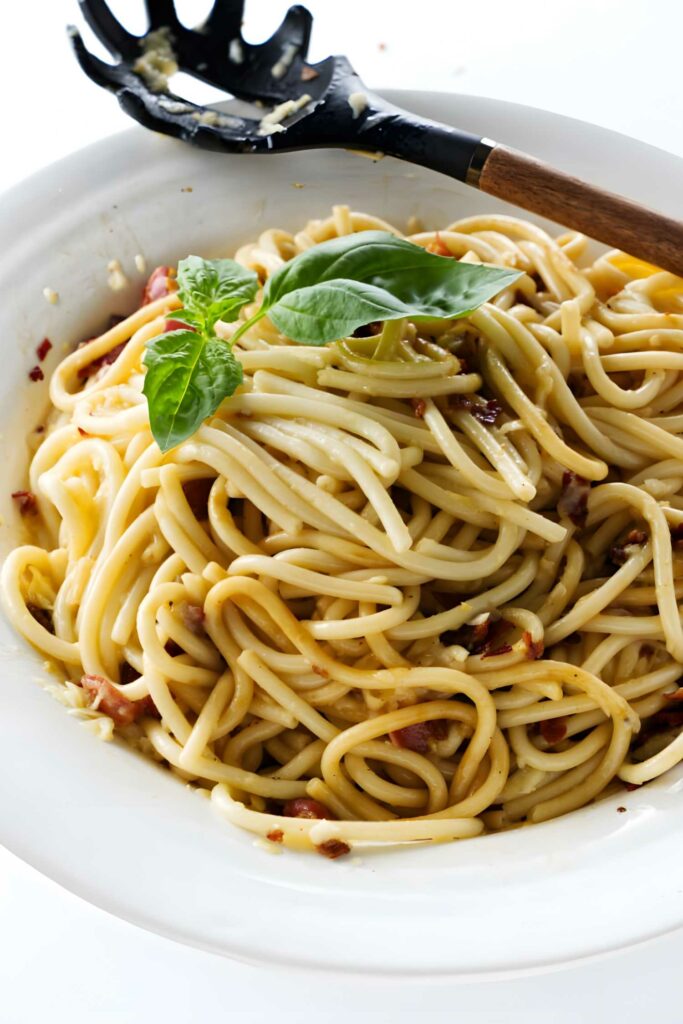
Bucatini Carbonara
Bucatini alla Carbonara proves that simple ingredients like eggs, cheese, pork, and pasta, can deliver incredible flavor. Stick to the method, work quickly, and you’ll end up with a dish that’s silky, savory, and everything carbonara is meant to be.
For another Italian pasta dish to try, my penne arrabbiata brings a fiery tomato sauce that’s as bold as it is simple.
Pin this now to find it later!
Pin It
Bucatini alla Carbonara
If you make this recipe, please leave a star rating and comment.
Ingredients
- 1 tablespoon olive oil
- 2 garlic cloves, minced, optional
- 10 ounces guanciale, bacon or pancetta, diced
- 3 large eggs
- 3 egg yolks
- 1 cup freshly grated pecorino
- ground black pepper
- ¼ teaspoon salt
- 1 pound dry bucatini
- ½ cup grated Parmigiano-Reggiano cheese, or Pecorino Romano Cheese
Instructions
- Warm the serving bowl: Preheat the oven to 200°F. Place a large ovenproof serving bowl or casserole dish inside to heat. You’ll use this warmed bowl to toss the pasta and sauce.
- Cook the guanciale: Heat the olive oil in a sauté pan over medium-high heat. Add the guanciale (or pancetta/bacon) and cook until browned and crisp, about 8–10 minutes. Add the garlic and cook just until fragrant, do not let it brown. Remove from heat and set aside.
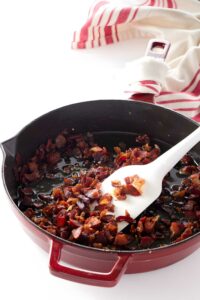
- Make the egg mixture: In a medium bowl, whisk the whole eggs and egg yolks. Stir in the Pecorino, a generous amount of black pepper, and ¼ teaspoon salt. Set aside.
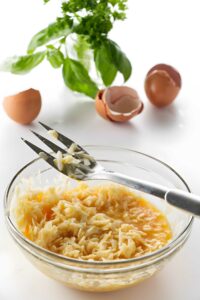
- Cook the pasta: Bring a large pot of salted water to a boil. Add the bucatini and cook until al dente according to package directions. Before draining, reserve ½ cup of the pasta water. Drain well.
- Toss it all together: Transfer the hot pasta to the warmed serving bowl. Add the guanciale and toss well. Off the heat, pour in the egg and cheese mixture, tossing quickly with two forks or tongs until the pasta is glossy and coated. Add small splashes of the reserved pasta water as needed to loosen the sauce.
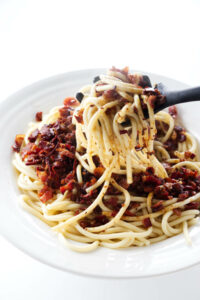
- Sprinkle with Parmigiano-Reggiano and more black pepper. Serve immediately.
Video
Notes
Nutrition
Nutrition information is automatically calculated, so should only be used as an approximation.
 Like this recipe? Rate & comment below!
Like this recipe? Rate & comment below!This recipe was originally published on November 21, 2014.

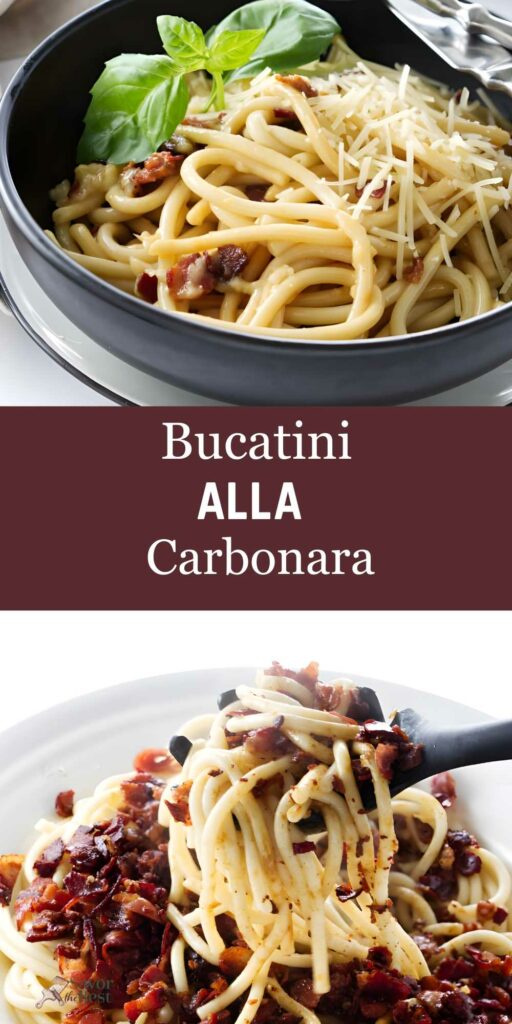
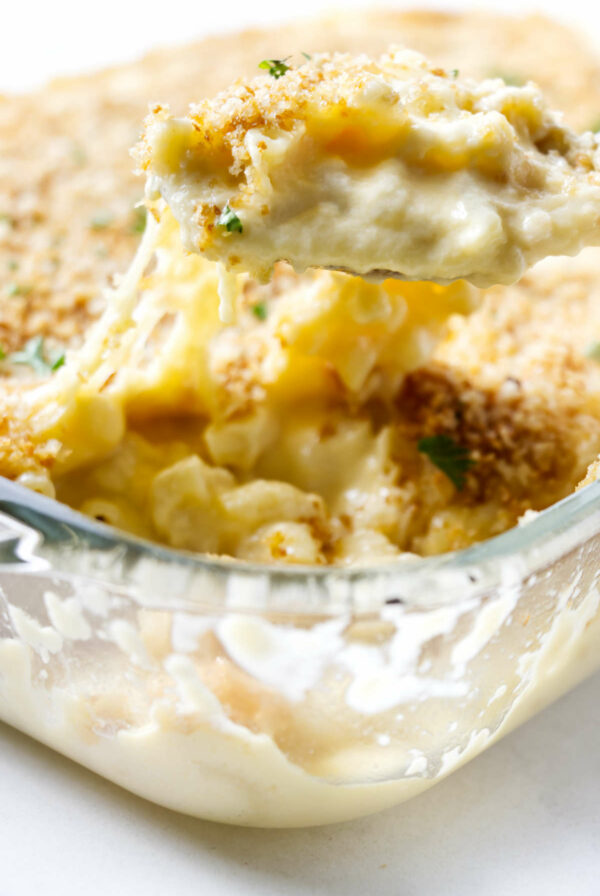
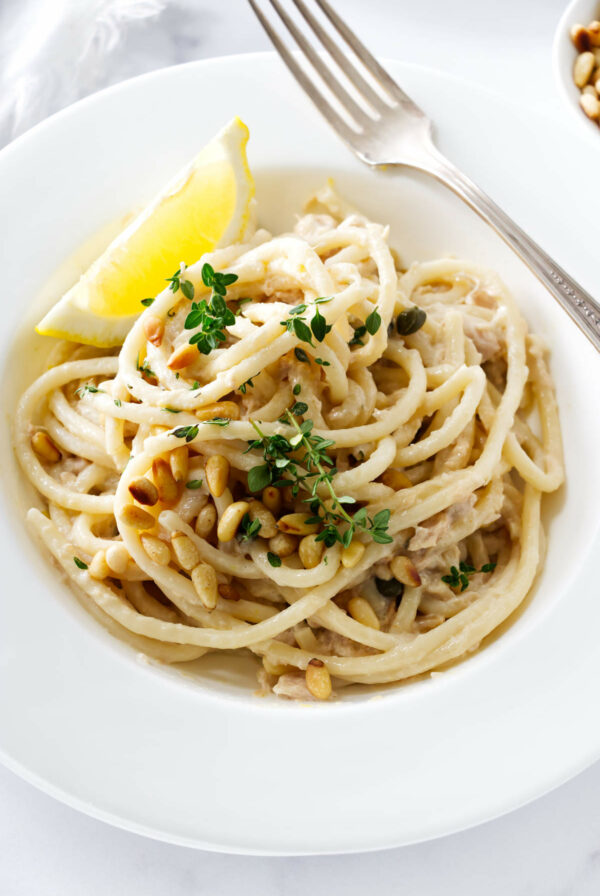
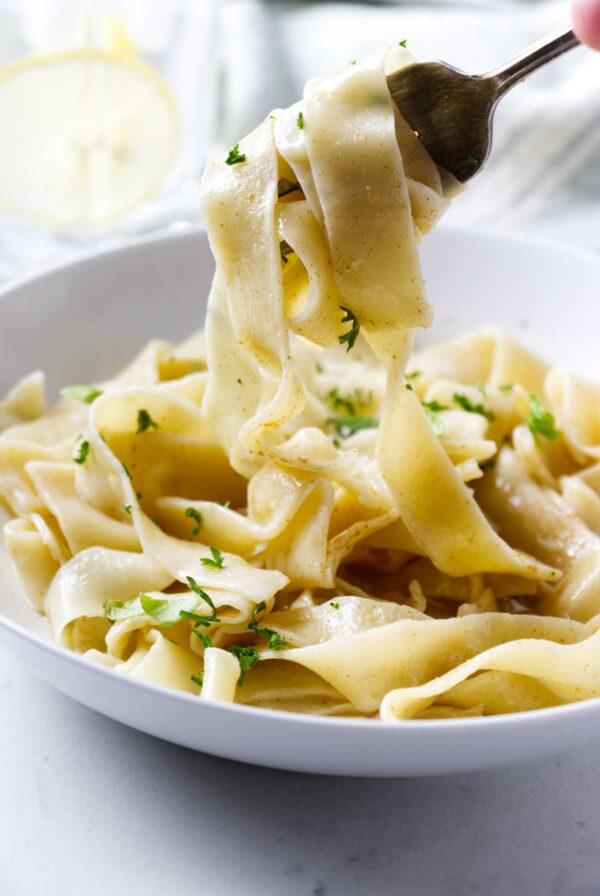
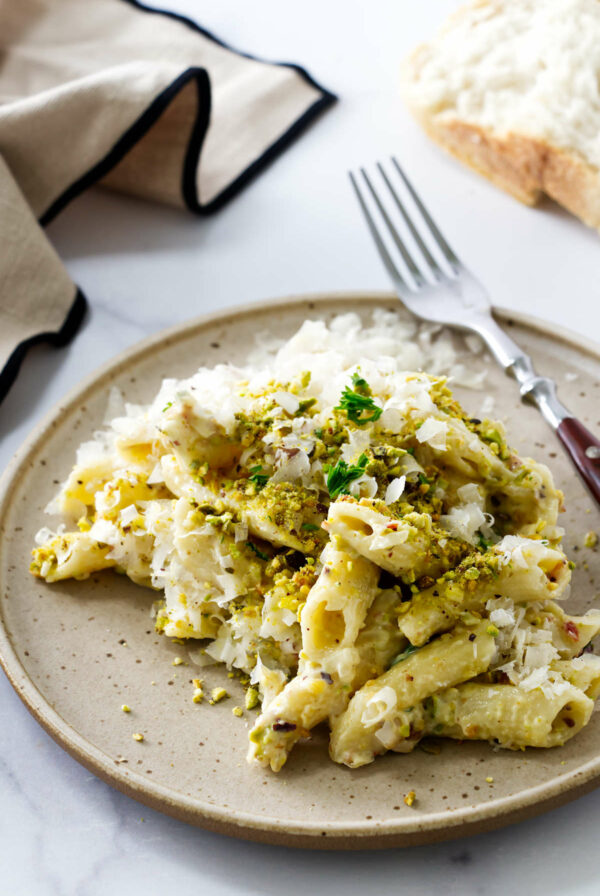










We use pasteurized eggs all the time just to be safe. Perfect for this dish! I haven’t made this in years — and it’s such a good dish. Yours looks terrific — thanks.
Thanks, John….Happy Thanksgiving!
I know I’d be happy with a tummy full of this pasta!
Hi, Maureen…yes, it is creamy, tasty and tummy filling! Thanks for your comment. 🙂
This was always one of my son’s favorite meals but I never think to make it anymore. Thanks for the reminder – I’m stocking up on eggs and bacon because he’ll be home from college for Thanksgiving! Lovely photos 🙂
Thank you, Anne. This is a quick recipe to put together as by the time the pasta is cooked the rest of the plan is ready to go. Easy, peasy….Happy Thanksgiving to you and your family!